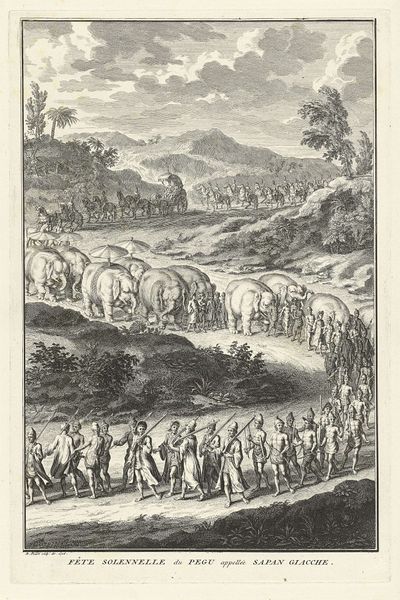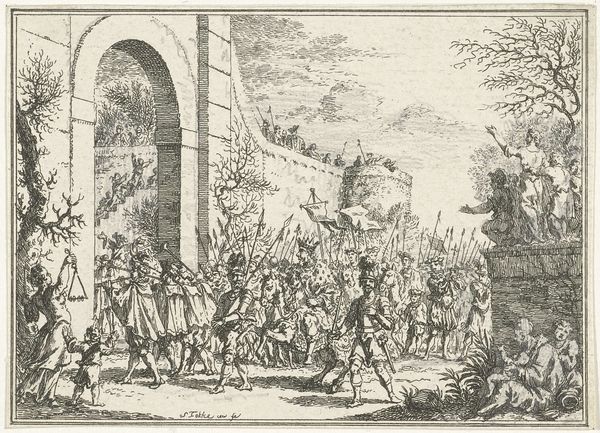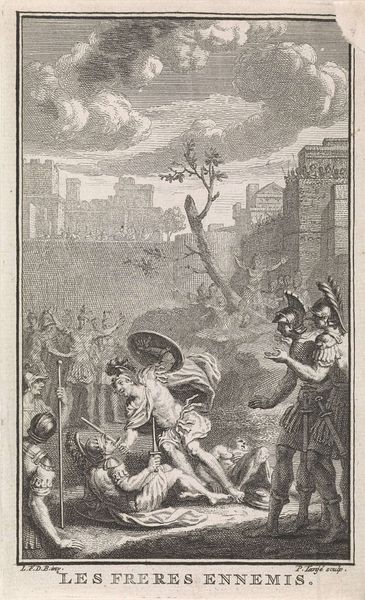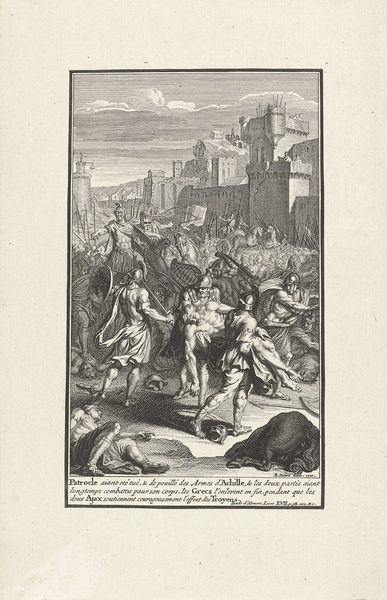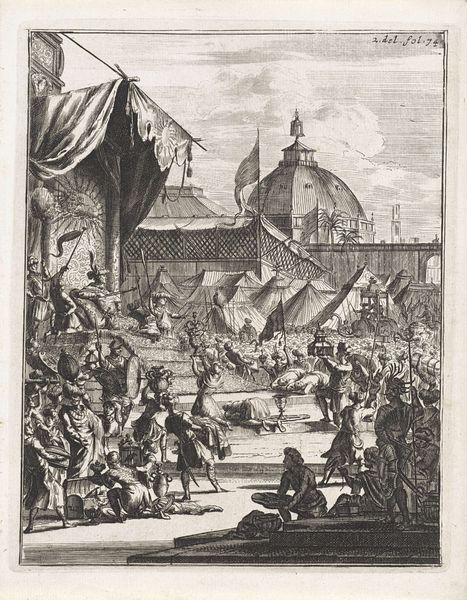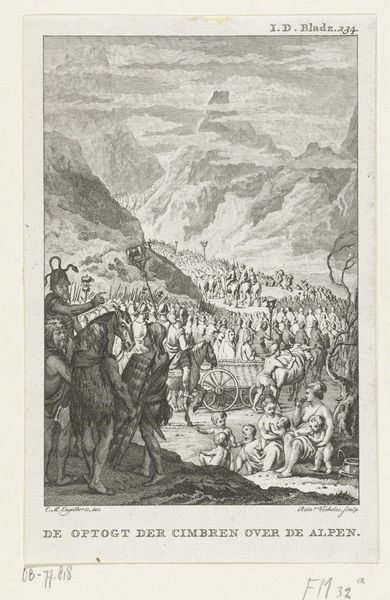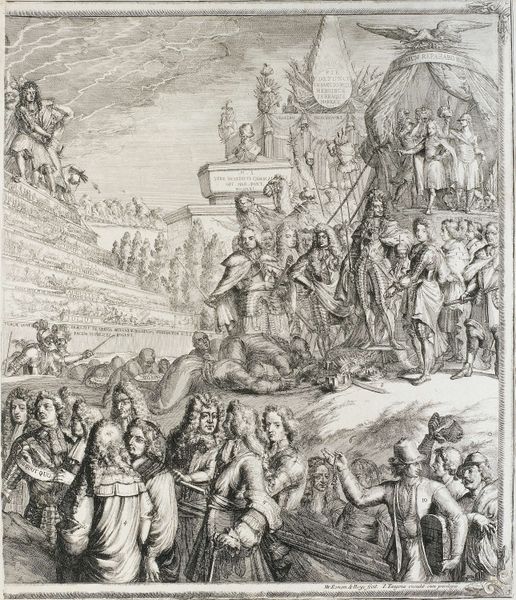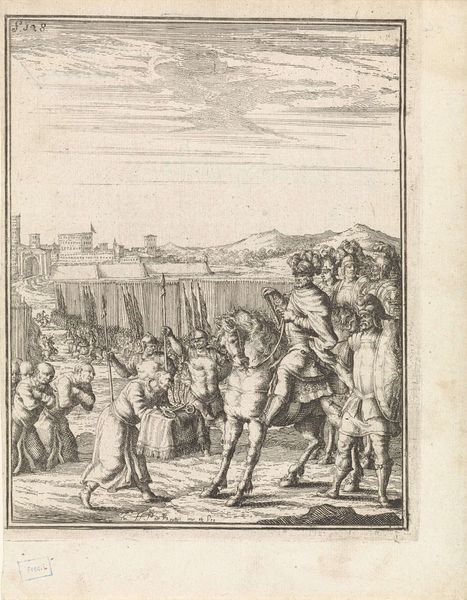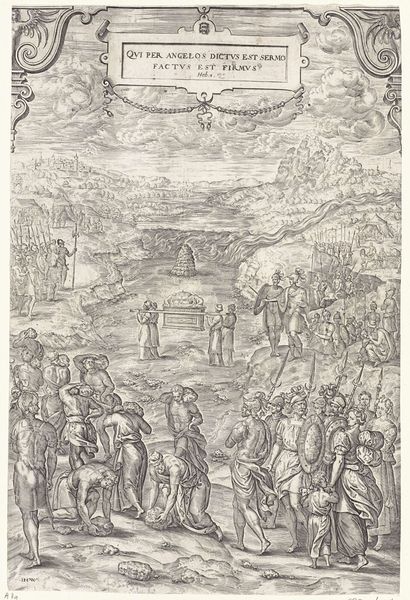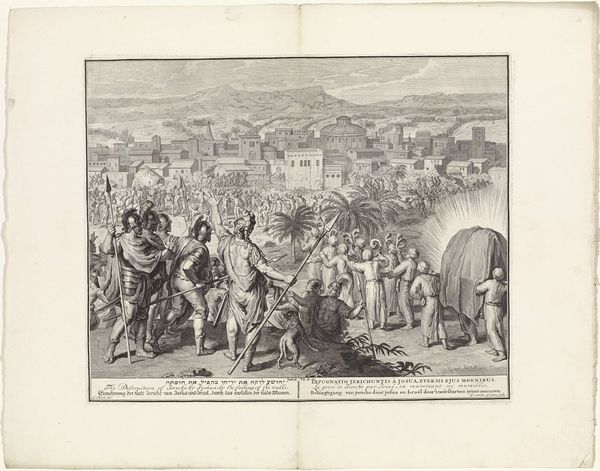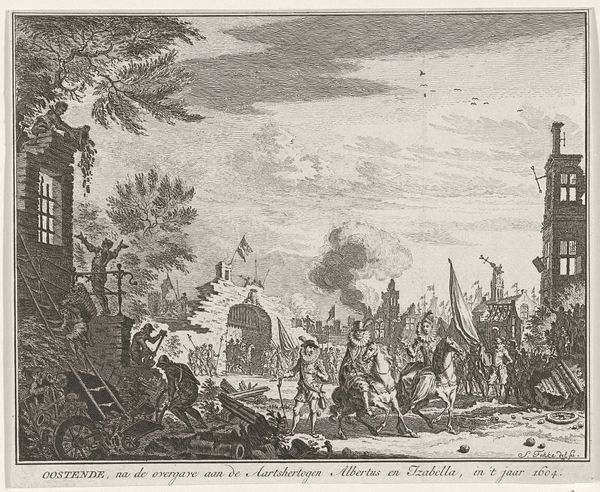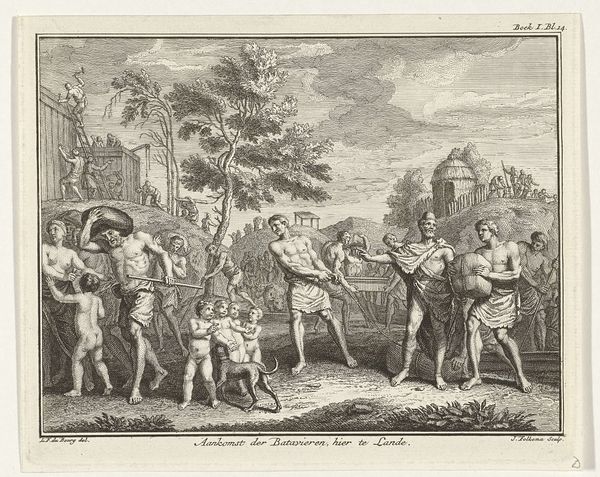
Voorstelling van een religieuze ceremonie op een van de Spaanse eilanden 1721
print, etching, engraving
narrative-art
pen illustration
etching
engraving
Dimensions: height 332 mm, width 218 mm
Copyright: Rijks Museum: Open Domain
Bernard Picart made this print of a religious ceremony on a Spanish island, likely in the early 18th century. But what kind of ceremony is this, and why did Picart depict it? The image shows a gathering of indigenous people engaged in what appears to be a ritual inside a large structure. The caption identifies it as a religious ceremony of the inhabitants of Isle Espagnole, now known as Hispaniola, shared by Haiti and the Dominican Republic. Picart never visited the Americas. So, how did he create this image? He likely relied on second-hand accounts from travelers, missionaries, or colonial officials. We can also consider the institutional history. Prints like these often served a dual purpose: to document and to justify European colonization. They visually reinforced the idea of European superiority and the need to "civilize" indigenous populations. Historians can use sources like colonial records, missionary accounts, and anthropological studies to unpack the complex layers of meaning embedded in images like these. It reminds us that art is always shaped by the social, political, and institutional context in which it is made.
Comments
No comments
Be the first to comment and join the conversation on the ultimate creative platform.
